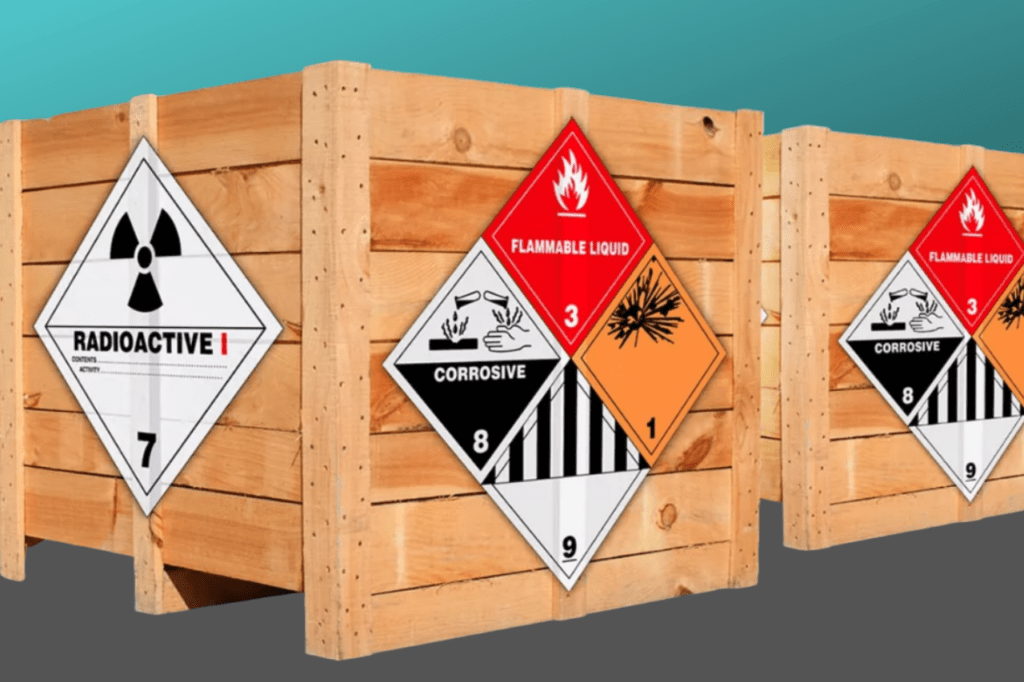
Dangerous goods, also known as hazardous materials, are items or substances that pose a potential risk to health, safety, or the environment during transportation. These goods are classified based on their physical and chemical properties, which can include flammability, toxicity, corrosivity, and more. Shipping dangerous goods requires special care and attention to ensure they are transported safely and comply with regulations. In this article, we’ll take a closer look at what items are classified as dangerous goods and how to properly ship them.
Classification of Dangerous Goods
The International Air Transport Association (IATA) and the International Maritime Organization (IMO) are the two main organizations that classify dangerous goods. Dangerous goods are classified into nine classes, based on their properties:
Class 1: Explosives – Items that contain explosive materials, such as fireworks and ammunition.
Class 2: Gases – Compressed gases, such as propane and butane.
Class 3: Flammable Liquids – Liquids that have a flashpoint below 60°C, such as gasoline and alcohol.
Class 4: Flammable Solids – Solids that are flammable and can ignite easily, such as matches and flammable chemicals.
Class 5: Oxidizing Substances – Items that can increase the risk of fire when they come into contact with other substances, such as hydrogen peroxide and potassium permanganate.
Class 6: Toxic and Infectious Substances – Items that can cause harm when they are ingested or come into contact with the skin, such as pesticides and medical waste.
Class 7: Radioactive Materials – Items that contain radioactive substances, such as medical isotopes and nuclear fuel.
Class 8: Corrosive Substances – Items that can corrode or erode other materials, such as battery acid and cleaning products.
Class 9: Miscellaneous Dangerous Goods – Items that do not fit into the other categories, such as lithium batteries and dry ice.
Shipping Dangerous Goods
Shipping dangerous goods requires careful planning and preparation to ensure they are transported safely and comply with regulations. The following steps should be taken when shipping dangerous goods:
- Determine the classification of the item – It is essential to determine the classification of the item before shipping it. This will help determine the packaging, labeling, and documentation requirements.
- Package the item properly – The packaging used for dangerous goods must be designed to withstand the rigors of transportation and protect the contents from damage. The packaging must also meet specific requirements based on the item’s classification. For example, flammable liquids must be packaged in UN-approved containers.
- Label the package correctly – The package must be labeled correctly with the item’s classification and other necessary information. This information includes the proper shipping name, hazard class, UN identification number, and packing group.
- Complete the necessary documentation – Shipping dangerous goods requires specific documentation, including a dangerous goods declaration and a bill of lading. This documentation must be completed accurately and submitted to the carrier before the item is shipped.
- Follow regulations – Shipping dangerous goods is regulated by various international and national regulations, including the IATA Dangerous Goods Regulations and the IMDG Code. It is essential to follow these regulations to ensure that the item is transported safely and legally.
Conclusion
Shipping dangerous goods requires special care and attention to ensure they are transported safely and comply with regulations. The classification of dangerous goods is based on their physical and chemical properties, and there are nine different classes of dangerous goods. When shipping dangerous goods, it is essential to determine the classification of the item, package it properly, label the package correctly, complete the necessary documentation, and follow regulations. By following these steps, dangerous goods can be shipped safely and legally, reducing the risk of harm to people and the environment.
